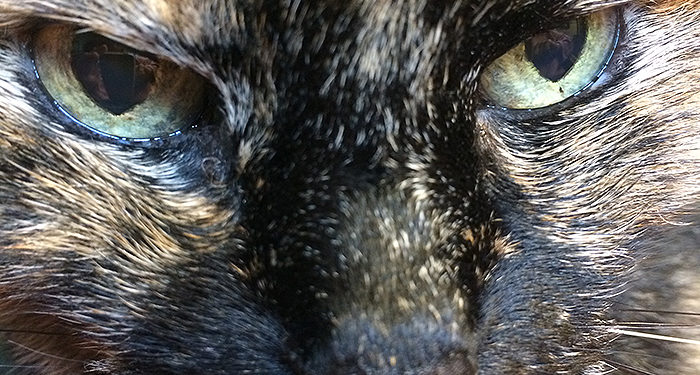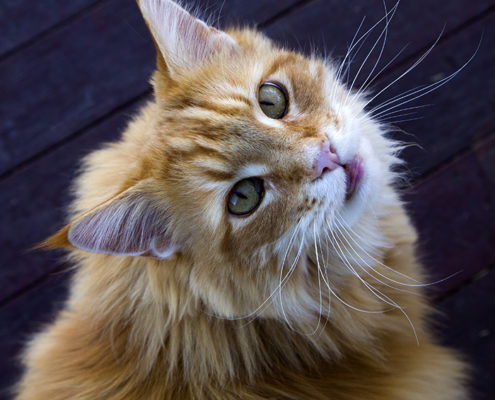Domestic Cat
Description
Domestic cats come with multiple variations in coloring or markings, fur length, tail length, ear shapes and general body size. Persians and Turkish angoras, as well as Ragdolls and Himalayans, to name a few, sport long, silky fur coats. The Mexican Hairless is just that, with a downy fuzz in place of fur. The Scottish fold, a relatively new breed, has a gene mutation which causes its ears to fold forward giving the cats’ face a rounded, owl-like appearance. The Manx has a short bobbed tail, and Munchkins have short legs. The Maine Coon is the largest breed of domestic cat, holding the record for longest body length at almost 4’. (Source: Wikipedia) Small breeds of cats may weigh as little as 4-5 pounds while the Maine Coon or Norwegian Forest cat may easily reach 20+ pounds.
A cat of mixed or indeterminate origin is called a “moggy” or “moggie.” They are the most common type of domesticated cats and come in all shapes, sizes and colors, both long and short hair. (Source: Cat World)
Cats live everywhere, and have in their way managed to adapt to basically any environment – though largely as a result of living with humans. (Source: BioExpedition)
Cats can be extremely friendly companions. Kittens become social between the second and seventh week of life. During this time, social skills are developed. Kittens are curious creatures and treat many objects as toys. Supplying toys and climbing poles helps to keep them occupied while they are being slowly socialized. (Source: Wikipedia) If one reads available literature regarding cat behavior, the constant referral to aloofness and indifference is cited. The next statement seems to nail it: “Cat psychology is a surprisingly complex subject.” (Source: BioExpedition)
Communication: Kittens need vocalization early on in order to develop communication properly. The change in intensity of vocalization will change depending on how loud their feedback is. Purring or a soft buzz, can mean the cat is content or possibly that they are sick. Meows are a frequently used greeting. Meows occur when a mother is interacting with her young. Hissing or spitting indicate the cat is angry or defensive. Yowls can mean that the cat is in distress or feeling aggressive. Chattering occurs when they are hunting or being restrained from hunting. (Source: Wikipedia)
Body postures (as with human “body language”), can be a silent means of communication. Much can be “said” with the tail, ears, head position and back posture—fear, contentment, anxiety, alertness and relaxation; possibly in conjunction with sounds or vocalizations.
Diet: Cats are obligate carnivores, and cannot live without a steady supply of meat. They will also periodically consume grass or chew houseplants. A domesticated house cat will eat the food provided by their person, but their innate desire to hunt is not diminished. For all their charm and lovableness, cats are the number one decimator of the wild bird population and thought poorly of by wildlife protectors.
Chlamydial conjunctivitis - an infection of the membrane around the eye . Most affected cats are less than a year old. If treating a cat with this condition frequent hand washing is necessary or the condition could be passed to humans.
Rabies
Ringworm
Intestinal parasites
Ear mites
Source: ASPCA ; Merck Manual/Veterinary Manual










